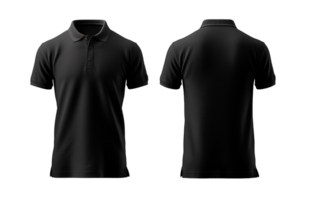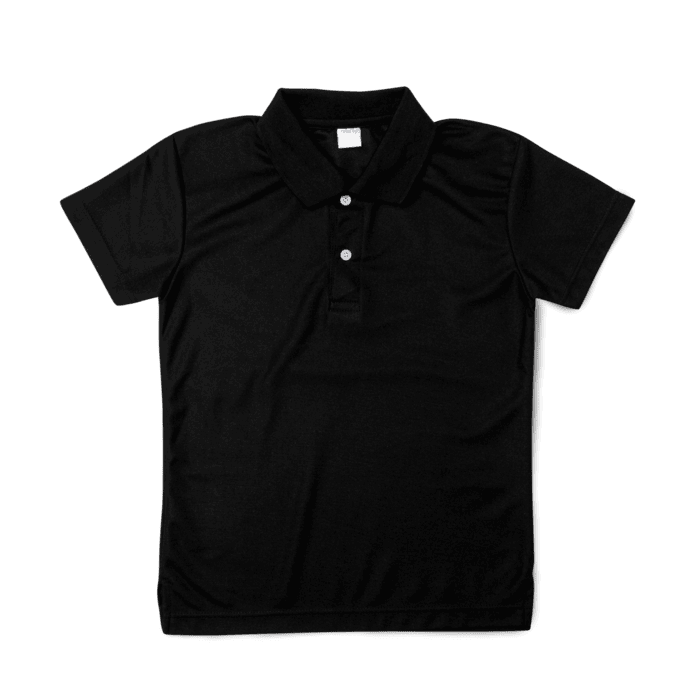Few garments possess the universal appeal and enduring versatility of the black polo shirt. It’s a true chameleon of the wardrobe, effortlessly transitioning from a casual weekend staple to a smart-casual office essential, or even a sleek statement piece for an evening out. But have you ever stopped to consider the intricate details and design philosophies that go into creating such an iconic item? It's more than just a black shirt with a collar and a few buttons. The "background" of a black polo shirt design encompasses a fascinating blend of history, fabric innovation, meticulous tailoring, and subtle branding.
In this article, we're going to delve deep into the world of the black polo, exploring the myriad design elements and historical influences that contribute to its timeless appeal. We'll uncover the 'background' that shapes not just one, but countless iterations of this classic garment, imagining the depth of thought that could go into even 27 distinct black polo shirt designs, each with its own story and purpose. From the weave of the fabric to the cut of the placket, every detail plays a crucial role in its identity and how it feels to wear.
The Enduring Legacy of the Polo Shirt: From Courts to Catwalks
To truly appreciate the design background of any black polo, we must first acknowledge its origins. The polo shirt, as we know it, was popularized in the 1920s by French tennis legend René Lacoste. Frustrated with the stiff, long-sleeved tennis attire of his era, he designed a more comfortable, breathable, short-sleeved shirt made from a loosely knit piqué cotton. This revolutionary design allowed for greater freedom of movement and quickly became a hit on the tennis courts, eventually making its way to polo fields (hence the name) and then into mainstream fashion.
The choice of black for this garment adds another layer of sophistication and versatility. Black is inherently elegant, powerful, and universally flattering. It absorbs light, creating a sleek silhouette, and serves as a perfect canvas for subtle textures or minimal branding. Its ability to pair with virtually any other color or pattern makes it an indispensable component of any well-curated wardrobe. The combination of the polo's sporty yet refined silhouette with the timeless appeal of black creates a garment that transcends trends and seasons.
Deconstructing the Design Backgrounds: What Makes Each Black Polo Unique?
When we talk about the "design background" of black polo shirts, we're not just looking at a single blueprint. Instead, we're examining the countless variables and choices that designers make to create different versions of this classic. Let's explore some of these key elements that contribute to the unique character of various black polo designs.
Fabric Innovations and Comfort
The foundation of any great polo shirt is its fabric. While the traditional piqué knit cotton remains a classic, modern innovations offer a vast spectrum of choices:
Piqué Knit: The original and still incredibly popular. Its distinctive waffle-like texture provides excellent breathability, durability, and a slightly structured feel. The depth of the black color can vary subtly depending on the weave.
Jersey Knit: A smoother, softer alternative to piqué, offering a more fluid drape and a dressier feel. Often made from mercerized cotton for a subtle sheen.
Performance Blends: Incorporating synthetic fibers like polyester or elastane to add stretch, moisture-wicking properties, and wrinkle resistance. Ideal for active lifestyles or warmer climates.
Sustainable Materials: Organic cotton, recycled polyester, or blends with Tencel or bamboo are increasingly popular, offering eco-conscious options without compromising on comfort or style.
Fabric Weight: A lighter weight fabric is perfect for summer, while a heavier gauge can offer more structure and warmth, making it suitable for cooler weather layering.
Each fabric choice dramatically influences the shirt's hand-feel, drape, breathability, and overall aesthetic, contributing to its distinct design background.
Collar and Placket Perfection
These seemingly small details are crucial to a polo's character and formality:
Collar Types: The classic ribbed knit collar is standard, but variations exist. Some polos feature a flat knit collar for a sharper, more modern look, while others might have a slightly stiffer, self-fabric collar for a dressier feel. The height and stiffness of the collar can also vary, impacting how well it stands up.
Placket Variations: The strip of fabric holding the buttons is called the placket. Most common are two-button or three-button plackets. A two-button placket tends to be more casual, while three buttons can lend a slightly more formal air. Hidden plackets offer a minimalist, sleek look, and even zipper plackets can be found for a contemporary, athletic vibe.
Button Choices: Buttons are often overlooked but can add a touch of luxury or personality. Mother-of-pearl buttons offer a refined sheen, while horn buttons provide a natural, earthy feel. Simple plastic buttons are common, but even their color (matching, contrasting, or translucent) can make a difference. Branded buttons add an extra layer of exclusivity.
Fit and Silhouette Evolution
The cut of the polo shirt determines how it sits on the body, influencing comfort and style:
Classic/Regular Fit: A more relaxed, traditional cut that offers ample room for movement. It's comfortable and forgiving, suitable for most body types.
Slim Fit: Tapered through the chest and waist, offering a more contemporary, tailored silhouette. Ideal for those who prefer a modern, form-fitting look.
Custom/Athletic Fit: Often designed with specific body types or activities in mind, featuring slightly more room in the shoulders and chest, tapering down for a clean look.
Hem Styles: Most polos feature a straight hem with side vents for ease of movement and a neat appearance when untucked. Some may have a slightly longer back hem (tennis tail) to prevent it from riding up during activity, or a completely straight hem for a cleaner, more minimalist look.
Branding and Embellishments
The subtle details that give a black polo its identity:
Logo Placement: The iconic embroidered logo on the left chest is a hallmark of many brands. However, logos can also appear on the sleeve, the back of the neck, or subtly integrated into the placket.
Logo Style: From intricately embroidered animal motifs to minimalist printed brand names, the logo itself is a key design element. Some polos feature no external branding for a truly understated aesthetic.
Subtle Details: Contrast stitching on the collar or placket, branded inner neck tape, unique buttonhole stitching, or even a different fabric lining inside the collar can elevate a basic black polo into something special.
Cultural Impact and Versatility
Beyond the physical attributes, the "background" of a black polo also includes its cultural resonance. It has been adopted by various subcultures, from preppy collegiate styles to sharp mod looks, and even as part of professional uniforms. Its ability to be dressed up with tailored trousers and a blazer, or dressed down with jeans and sneakers, speaks volumes about its inherent adaptability. The black polo is not just a garment; it's a cultural touchstone that signifies understated elegance and effortless cool.
The Psychology of Black in Fashion
The choice of black is a design decision in itself. It's associated with sophistication, authority, mystery, and timelessness. It's a color that never goes out of style and provides a flattering base for almost any complexion. This psychological impact is an integral part of the black polo's design background, contributing to its widespread appeal and perceived value.
Why the Black Polo Remains a Wardrobe Essential
The journey through the design background of the black polo shirt reveals why it remains an undisputed wardrobe essential. It's a testament to thoughtful design, continuous innovation, and an understanding of both aesthetics and functionality. Whether you prefer a classic piqué knit with a two-button placket or a modern slim-fit performance blend with a hidden placket, there's a black polo designed to meet your specific needs and style preferences. Its adaptability across occasions, its ability to be dressed up or down, and the inherent confidence it imparts make it a cornerstone of contemporary fashion.
In essence, the "27 polo black t shirt design background" isn't about 27 specific shirts, but rather the countless design decisions, historical influences, and material innovations that collectively shape the diverse world of black polo shirts. Each iteration, no matter how subtle its differences, tells a story of craftsmanship and style.
In summary, this article has explored the rich and varied design background of the black polo shirt, tracing its origins from the tennis courts to its status as a global fashion icon. We delved into critical design elements such as fabric choices (piqué, jersey, performance blends), collar and placket variations (two-button, three-button, hidden), different fits (classic, slim, athletic), and the subtle yet impactful role of branding and embellishments. Furthermore, we examined the cultural significance and the psychological power of the color black in fashion, highlighting how these factors contribute to the black polo's enduring versatility and timeless appeal as a wardrobe essential.




